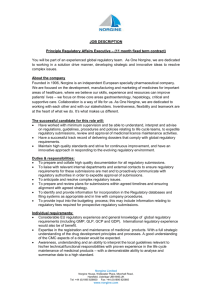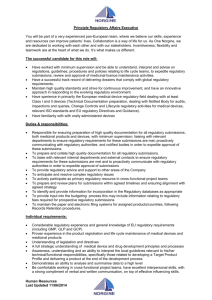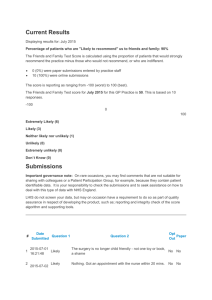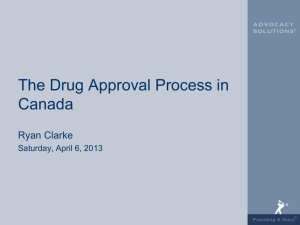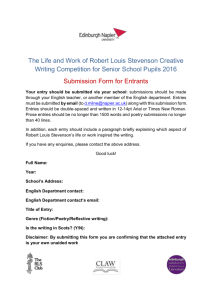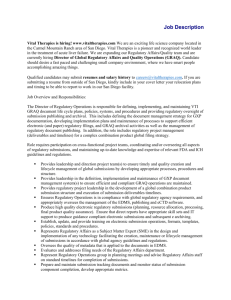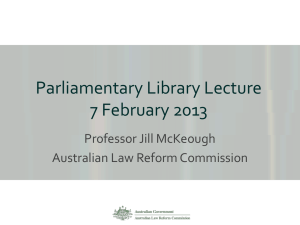DOCX - 32.09 KB
advertisement
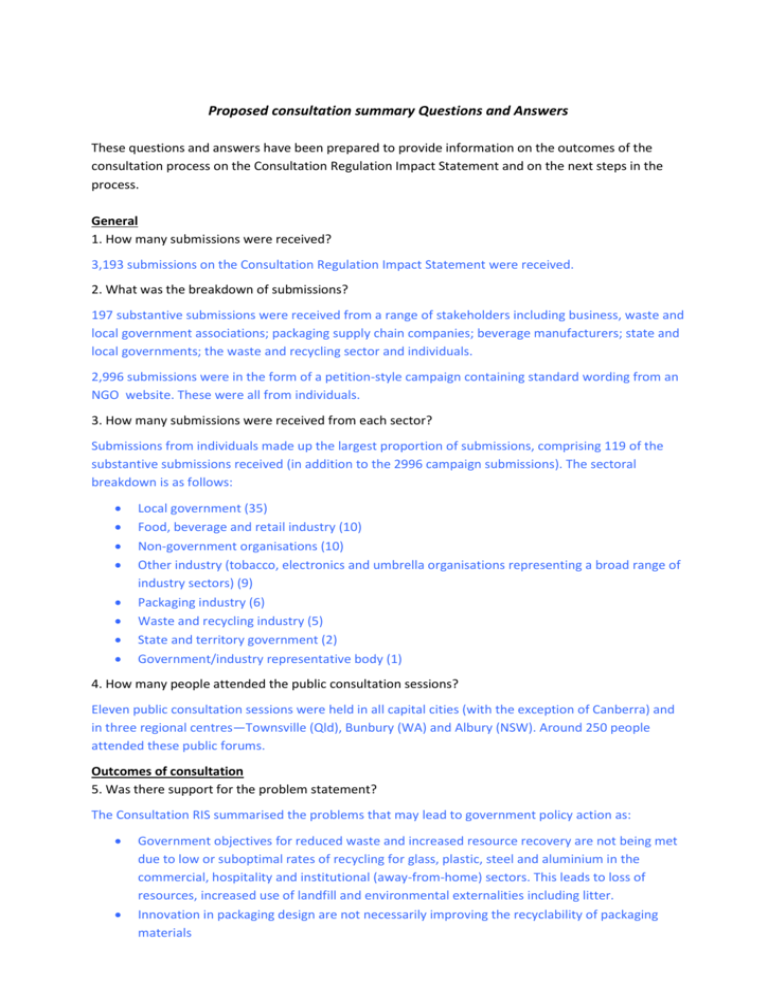
Proposed consultation summary Questions and Answers These questions and answers have been prepared to provide information on the outcomes of the consultation process on the Consultation Regulation Impact Statement and on the next steps in the process. General 1. How many submissions were received? 3,193 submissions on the Consultation Regulation Impact Statement were received. 2. What was the breakdown of submissions? 197 substantive submissions were received from a range of stakeholders including business, waste and local government associations; packaging supply chain companies; beverage manufacturers; state and local governments; the waste and recycling sector and individuals. 2,996 submissions were in the form of a petition-style campaign containing standard wording from an NGO website. These were all from individuals. 3. How many submissions were received from each sector? Submissions from individuals made up the largest proportion of submissions, comprising 119 of the substantive submissions received (in addition to the 2996 campaign submissions). The sectoral breakdown is as follows: Local government (35) Food, beverage and retail industry (10) Non-government organisations (10) Other industry (tobacco, electronics and umbrella organisations representing a broad range of industry sectors) (9) Packaging industry (6) Waste and recycling industry (5) State and territory government (2) Government/industry representative body (1) 4. How many people attended the public consultation sessions? Eleven public consultation sessions were held in all capital cities (with the exception of Canberra) and in three regional centres—Townsville (Qld), Bunbury (WA) and Albury (NSW). Around 250 people attended these public forums. Outcomes of consultation 5. Was there support for the problem statement? The Consultation RIS summarised the problems that may lead to government policy action as: Government objectives for reduced waste and increased resource recovery are not being met due to low or suboptimal rates of recycling for glass, plastic, steel and aluminium in the commercial, hospitality and institutional (away-from-home) sectors. This leads to loss of resources, increased use of landfill and environmental externalities including litter. Innovation in packaging design are not necessarily improving the recyclability of packaging materials There is a potential for increasingly fragmented jurisdictional approaches which add to regulatory complexity, increased business costs and uncertainty for investment, and fragmented end-markets Continued improvements in recycling rates will rely on local government who provide municipal services. The current disparity in provision of services across urban, regional and rural settings illustrates that an expansion and improvement of these services cannot be assumed. The majority of submissions did not question the statement of problem, although some industry submissions did question the extent of the problem. This was in relation to the base case projections showing an improved level of future recycling and better litter outcomes without additional government intervention. Local government submissions emphasised the costs that they bear in addressing downstream impacts of packaging waste through household kerbside recycling programs and litter cleanup in public places. 6. Were there comments on the base case? Several submissions commented that the base case projections may be optimistic about future recycling and litter outcomes. Questions were also raised about the quantum of the projections at several of the public forums. 7. Were there comments about specific options? Almost all of the submissions identified a need to take some sort of action to address packaging waste and litter. A large number of submissions also suggested that the packaging industry should take greater responsibility for the environmental impacts of packaging. There was general support for a national container deposit scheme in the form of a campaign submission. Some other submissions also expressed general support for a container deposit scheme without expressing a preference of the options identified in the CRIS. Other submissions were more mixed in their views on a preferred option. A common theme among submissions from individuals and local governments was that it should be mandatory for industry to design recyclable packaging and that the packaging industry should be obliged to include Australian-sourced recyclate in their packaging. A number of submissions also suggested that the South Australian container deposit scheme should have been used as a model for a national approach. Next steps 8. What happens now that the CRIS has been finalised and submissions closed? Ministers will consider the consultation report when the ministerial council next meets later this year. Work is continuing in order to help inform ministers’ decisions regarding a Decision Regulation Impact Statement (DRIS). 9. How long will the process take? If Ministers agree to prepare a DRIS, it is likely a DRIS would not be completed before 2013. Preparation of a DRIS requires much more detailed analysis than a CRIS. 10. Will there be further public consultation? A DRIS does not require public consultation; however, some targeted stakeholder consultation may be necessary to finalise the stakeholder options that were proposed in the CRIS. 2
